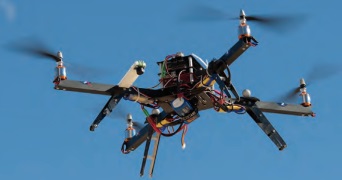Chapter: Collision Avoidance Technologies, new invention technology, Research project papers,
Multi-Level Autonomous Piloting System (MAPS)

Multi-Level Autonomous Piloting System (MAPS)
Effective
multi-level autonomous piloting systems require integration with
safety-critical functions. The MAPS project seeks to develop
a
hierarchal autonomous system framework that will depend on deterministic
systems with higher authority to protect against catastrophic piloting faults
and allow a lower level certification for the machine learning sub-systems. The
multi-layered approach provides the framework for analytical systems that can
learn, predict, and adapt to both routine and emergency situations.
Work
to date: The hierarchical decision chain and framework, hardware,
and embedded processing related to ground collision avoidance is in place for a
sub-scale platform. Flight tests on a quad-rotor model helicopter demonstrated
successful limitation of flight decisions when facing imminent ground
collision.
Looking
ahead: The team is developing a full set of
safety-critical functions for the sub-scale platforms and working
to scale up to larger UAVs.
Partners: University
of California at Berkeley and Stanford University are developing
algorithms, and the FAA is participating in the certification process.
Benefits
Increases
safety: Integration of safety-critical functions improves outcomes in
emergency situations.
Certifiable: Removal of
safety-critical functions from the autonomous control enables adaptable
processes to be certified to a lower level.
Applications
UAVs
and unmanned submersibles Autonomous rail transport
Deep
space exploration Driverless vehicles
Collision Avoidance Technologies
Researchers at Armstrong are dramatically
improving upon existing ground collision avoidance technology for aircraft.
Controlled flight into terrain remains a leading cause of fatalities in
aviation, resulting in roughly 100 deaths each year in the United States alone.
Although warning systems have virtually eliminated this problem for large
commercial air carriers, the problem still remains for fighter aircraft,
helicopters, and general aviation.
Armstrong innovators have been working with
the U.S. Air Force for more than 25 years to develop automatic col-lision
avoidance technologies for fighter aircraft that would reduce the risk of
ground collisions, the leading cause of fatalities in both military and general
aviation. The result of the collaboration is lifesaving technology that
incorporates onboard digital terrain mapping data with data-adaptive algorithms
that predict impending ground collisions.
Related Topics